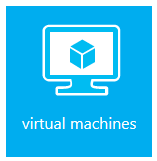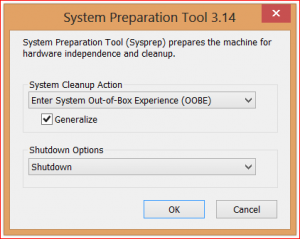Tag: Windows 2008 R2
 Traditionally Windows VMs (virtual machines) in Azure would include a Windows Server Datacenter license. The cost of this license was built into the hourly/monthly fee for that VM. This made systems easy to roll out using the GUI wizards and made licensing a cinch. If you are moving existing virtual machine workloads to the cloud, this can be expensive since you paying again for licenses you’ve already purchased.
Traditionally Windows VMs (virtual machines) in Azure would include a Windows Server Datacenter license. The cost of this license was built into the hourly/monthly fee for that VM. This made systems easy to roll out using the GUI wizards and made licensing a cinch. If you are moving existing virtual machine workloads to the cloud, this can be expensive since you paying again for licenses you’ve already purchased.
According to their new announcement, Microsoft says “now you can move your existing Windows Server licenses to Azure when you extend your datacenter to the cloud. With the Azure Hybrid Use Benefit, you can use on-premises Windows Server licenses that include Software Assurance to run Windows Server virtual machines in Azure at the base compute rate.” Continue reading
Permanent link to this article: https://www.robertborges.us/2017/06/windows/save-money-with-azure-vms-by-using-azure-hybrid-use-benefit/
Have you ever noticed how a server tends to slow down over time? No, this isn’t simply your server getting old and tired. This is often caused by the same server needing more and more memory (RAM) as time passes. There are good reasons why this happens, and ways to minimize the effects. Here are a few common reasons why a server requires more memory as time goes on. Continue reading
Permanent link to this article: https://www.robertborges.us/2014/08/windows/windows-server-2008-r2/why-do-servers-need-more-memory-as-time-goes-on/
When deleting user profiles, it is advisable to use the built-in GUI (graphical user interface) interface in Windows (Start >> System >> Advanced System Settings >> User Profile – Settings). This should delete all references in the registry, and the user’s profile folder (normally located in C:\Users). But what if this doesn’t work as it should? Continue reading
Permanent link to this article: https://www.robertborges.us/2014/07/questions-answers/how-to-delete-a-user-profile-from-the-registry/

SHUTDOWN Notification in Windows 8
I was recently surprised by how many seasoned IT Pros didn’t know that they had the ability to shut down a server or workstation from the command line using the SHUTDOWN command. Not only is it possible to shut down the local machine from the command line, but it is also possible to shutdown other machines on your domain as well. Continue reading
Permanent link to this article: https://www.robertborges.us/2013/07/windows/shutdown-computers-from-command-line/
SYSPREP is a Windows utility that allows a computer to be generalized. If you’re restoring system images (using Ghost or a similar technology) to multiple PCs on a network, then it is imperative that you first run SYSPREP to generalize the system. Continue reading
Permanent link to this article: https://www.robertborges.us/2013/07/windows/using-sysprep-in-audit-mode-before-creating-a-system-image/
As a seasoned virtualization expert (mostly with Hyper-V environments), I totally agree with the concept of building your VMs (virtual machines) and virtualization hosts to meet a particular need.
Often, I talk to SQL DBAs (database administrators) or Exchange administrators who swear that these platforms can NEVER be virtualized. This line of thinking is so wrong that Microsoft itself has bet their business around it (e.g., Office 365, Microsoft.com, etc.).
The most important piece of advice I give to virtualization newcomers is to treat a VM like you would a physical server. If a physical Exchange server needs 16GBs of memory and 4 CPUs, then building a VM with only a single virtual processor and 2GB of memory is going to result in a bad user experience, obviously.
HDD (hard disk drive) performance is always a concern with VMs. If you are creating a VM to run a disk intensive SQL server, then you will certainly care about your disk performance. With the more recent versions of Hyper-V, there is little noticeable performance reduction when choosing dynamically expanding VHD (virtual hard disk) vs. using a fixed size VHD. The big downside is that you now have to monitor and manage your storage on the host since your VMs can quickly consume physical space.
If extra disk performance is really needed, there is an option of using a pass-through disk. Pass-through disks will use an unused volume on the physical Hyper-V host as if that volume were its own. With pass-through disks you’ll get true hardware-level performance. The downside is that your VM is now tied to this physical storage making it difficult (or impossible) to migrate to a different host… so plan accordingly.
Permanent link to this article: https://www.robertborges.us/2013/05/virtualization/getting-better-performance-for-your-virtual-machines/
One of the biggest limitations of Hyper-V in Windows Server 2008 R2 was that it didn’t support storing a Virtual Hard Disk (VHD) on physical disks larger than 2 TB. This was actually due to the sector size of the physical disk which was supported by Hyper-V. Larger disks tended to use 4096-byte sectors (also known as 4k sectors). Continue reading
Permanent link to this article: https://www.robertborges.us/2013/03/windows/windows-server-2012/windows-server-2012-new-feature-large-disk-support-for-hyper-v/
SYSPREP is a Windows utility that allows a computer to be generalized. If you’re restoring system images (using Ghost or a similar technology) to multiple PCs on a network, then it is imperitive that you first run SYSPREP to generalize the system.

Not doing this will not only result in several PCs with the same computer name, but their unique identifiers (used by Active Directory and others) will all be identical. As you can imagine, having multiple PCs with the same computer name can be a real issue for network admins. Running a
SYSPREP allows the PC to be generalized with new unique IDs so that you get an “Out of the Box” experience (OOBE) on the next boot. While a SYSPREP can be done to any PC before attaching it to the network, I suggest running SYSPREP before you create a master image.
How to SYSPREP a Windows 7 or Windows 8 PC:
- Browse to “C:\Windows\System32\Sysprep” folder and launch the SYSPREP executable.
- In the System Cleanup Action drop down select “Enter System Out of Box Experience (OOBE)”
- Make sure to check the Generalize checkbox
- In the Shutdown options I suggest selecting Shutdown. This way after the system is prepped, the PC will shutdown, and will be ready for you to create your master image.
Once your system has gone through the SYSPREP process, before the computer boots again, it is safe to create a master image using your imaging software.
This method works not only on Windows 7, but Windows 8 and Windows Server 2008 and Windows Server 2012. I do also want to mention that it is a good idea to run SYSPREP on any virtual guest templates before rolling them out in masses on a Hyper-V or VMware host.
Related Posts:
Permanent link to this article: https://www.robertborges.us/2012/12/windows/using-sysprep-before-creating-a-system-image/
In the Hyper-V world, lots of us talk about Live Migration. That is where a virtual machine (VM) is moved from one host to another with no perceived downtime. The caveat is that both hosts need be configured to use the same shared storage (such as a SAN or external drive array). Continue reading
Permanent link to this article: https://www.robertborges.us/2012/07/windows/windows-server-2008-r2/hyper-v-quick-migration/
There are actually several ways to send email as another person, making it look like they actually sent the email. Most of these methods don’t actually require access to the users Email mailbox. This is what we refer to as spoofing. If you’ve ever received an Email from yourself, then you know what I’m talking about. Continue reading
Permanent link to this article: https://www.robertborges.us/2012/07/it-security/people-keep-getting-spam-emails-from-my-email-address-what-do-you-suggest/
In the Windows 2003/Windows XP days, printing on a Remote Desktop server was limited to those servers who have drivers for that particular server. Drivers for any locally attached printers would not only have to be installed on the PC that they were attached to, but also on the server you were remotely connecting to.
Now with Windows 2008 R2, Remote Desktop users have the ability to use printer redirection using Microsoft’s EasyPrint. Basically EasyPrint is part of Windows Server, and allows print jobs in a Remote Desktop session to be sent to the client for print job handling, instead of trying to print the job itself. While this is slightly slower than the old method, it allows for a much larger number of compatible printers without the need of installing drivers on the server.
Which printers will work? Well most printers that work with Windows 7 will work with Microsoft’s EasyPrint technology. If you are planning on purchasing a new printer and want to ensure that it will be fully compatible with any Remote Desktop servers you are connecting to, then check out Microsoft’s Windows Catalog database.
Any new printer you are considering should be certified for Windows 2008 R2 to fully ensure it will work well with a Remote Desktop server.
Permanent link to this article: https://www.robertborges.us/2012/06/windows/what-printers-work-best-with-a-windows-remote-desktop-server/
Often times printers do not work the way we expect them to. Sometimes when print jobs get stuck in the queue or cause the Windows printer spooler service to crash we need to step in to help. Here are a few quick steps that will take care of most scenarios that a simple reboot won’t fix.
On a side note, it is usually best if your computer is running the latest driver software from your printer’s manufacturer. This can generally be downloaded from the manufacturer’s website.
- Disconnect the printer from the PC. As long as Windows sees the printer connected it will try to print any jobs in the printer’s queue, including the job causing the problem. You can accomplish this by unplugging the printer’s data cable (usually USB) from either the back of the computer or from the back of the printer.
- Restart the Print Spooler service. Open a command prompt (with admin rights if using Windows 7) and type the following command followed by the <Enter> key:
net stop spooler & net start spooler
The spooler service should restart and bring you back to the command prompt.
NOTE: For more on this step, see my post on How to Open the Command Prompt with Admin Rights.
- Open the printer’s queue and delete any stuck jobs.
- Reconnect the printer to the PC. Windows will reconnect the printer and make it available. Try printing a test page to make sure it is working OK.
Related Posts:
Permanent link to this article: https://www.robertborges.us/2012/06/windows/what-to-do-when-a-print-job-crashes-your-printer-spooler-service/
In Windows XP all programs were run with administrator rights if you were logged in to the computer with a user account with admin rights to that system. There are obviously some security concerns with this, as any piece of software can potentially do damage to your system. This all changes with Windows Vista and Windows 7 as long as you keep UAC (User Access Control) enabled. UAC prevents software that need to access certain parts of Windows from running without any checks and balances.
By default, all programs are run without administrative rights. There are some cases where it is necessary to escalate the rights of an application so that it runs with these admin rights. A good example of this is Windows’ built-in Command Prompt utility. If you launch the Windows Command Prompt from the Start Menu, it will run with normal user (not administrative) rights. When the Command Prompt is opened this way, you will be allowed to do things like run a directory search or copy files, but not more advanced functions such as restarting Windows services. To allow these commands to run, you’ll first need to open the Command Prompt with administrative rights.
Opening the Command Prompt in Windows 7 with Administrative Rights:
- Click on the Start Menu and browse for the command prompt (Start >> All Programs >> Accessories >> Command Prompt), or search for Command Prompt.
- Instead of clicking on the Command Prompt icon to open it, right-click and select Run as Administrator.
- You may get prompted to allow this action, if you do simply click on the Yes button.
Permanent link to this article: https://www.robertborges.us/2012/06/windows/how-to-open-the-command-prompt-in-windows-7vista-with-administrative-rights/
It is very common for laptops to be lost or stolen. When this happens any data on the laptop could fall into the wrong hands. That is unless you have encrypted your device using BitLocker or another drive encryption technology.
If you’re not already familiar with it, BitLocker is the drive encryption technology introduced with Windows Vista and Windows Server 2008. The latest version has increased functionality and security. BitLocker is now available with Windows 7 Enterprise, Windows 7 Ultimate, and some editions of Windows Server 2008 R2.
By default BitLocker requires that your computer have a TPM chip built-in. This is a secure component which can securely keep your encryption key information. But what if you don’t have a TPM chip built-in to your computer? Continue reading
Permanent link to this article: https://www.robertborges.us/2012/05/windows/using-bitlocker-to-encrypt-computers-without-tpm-hardware/
 As you may have noticed, even the fastest computers tend to get slower as they age. These performance issues could be because either the hardware is no longer sufficient for the programs now running on it, or because it needs a little maintenance. Here are a few steps you can take to help speed up your system. Continue reading
As you may have noticed, even the fastest computers tend to get slower as they age. These performance issues could be because either the hardware is no longer sufficient for the programs now running on it, or because it needs a little maintenance. Here are a few steps you can take to help speed up your system. Continue reading
Permanent link to this article: https://www.robertborges.us/2012/04/windows/easy-steps-to-increase-your-computers-performance/
![]() Traditionally Windows VMs (virtual machines) in Azure would include a Windows Server Datacenter license. The cost of this license was built into the hourly/monthly fee for that VM. This made systems easy to roll out using the GUI wizards and made licensing a cinch. If you are moving existing virtual machine workloads to the cloud, this can be expensive since you paying again for licenses you’ve already purchased.
Traditionally Windows VMs (virtual machines) in Azure would include a Windows Server Datacenter license. The cost of this license was built into the hourly/monthly fee for that VM. This made systems easy to roll out using the GUI wizards and made licensing a cinch. If you are moving existing virtual machine workloads to the cloud, this can be expensive since you paying again for licenses you’ve already purchased.


 As you may have noticed, even the fastest computers tend to get slower as they age. These performance issues could be because either the hardware is no longer sufficient for the programs now running on it, or because it needs a little maintenance. Here are a few steps you can take to help speed up your system.
As you may have noticed, even the fastest computers tend to get slower as they age. These performance issues could be because either the hardware is no longer sufficient for the programs now running on it, or because it needs a little maintenance. Here are a few steps you can take to help speed up your system.